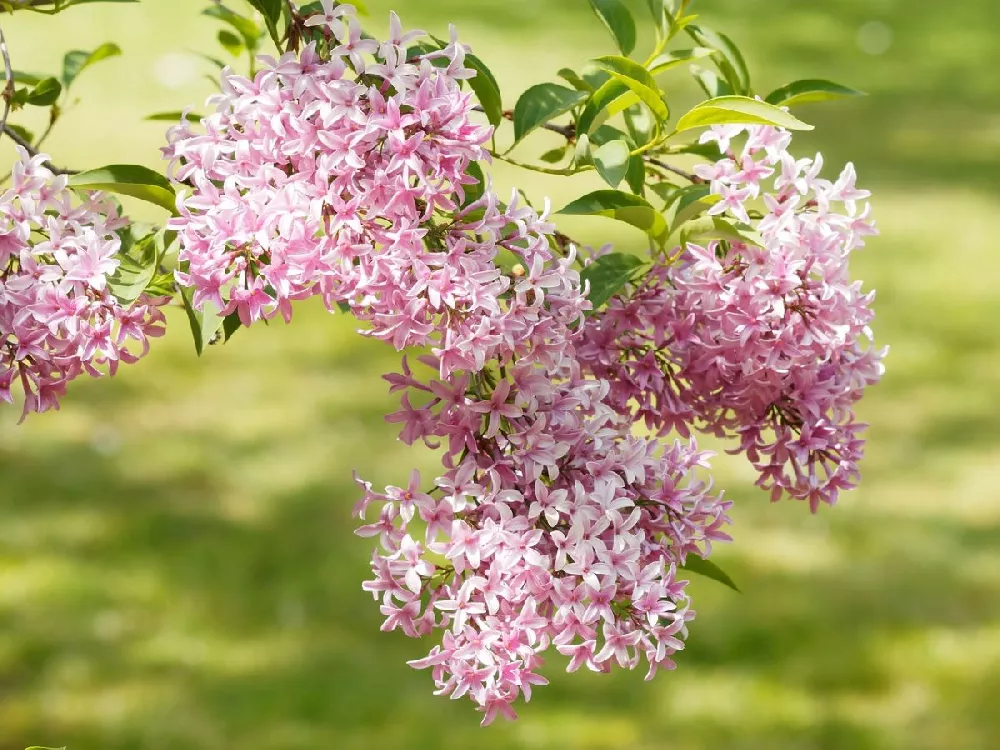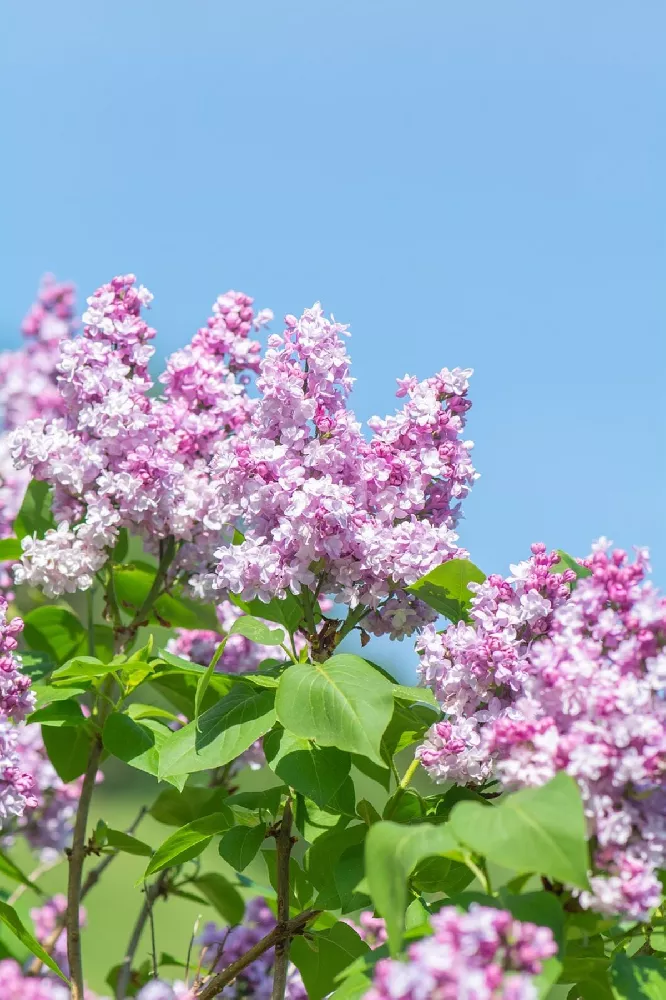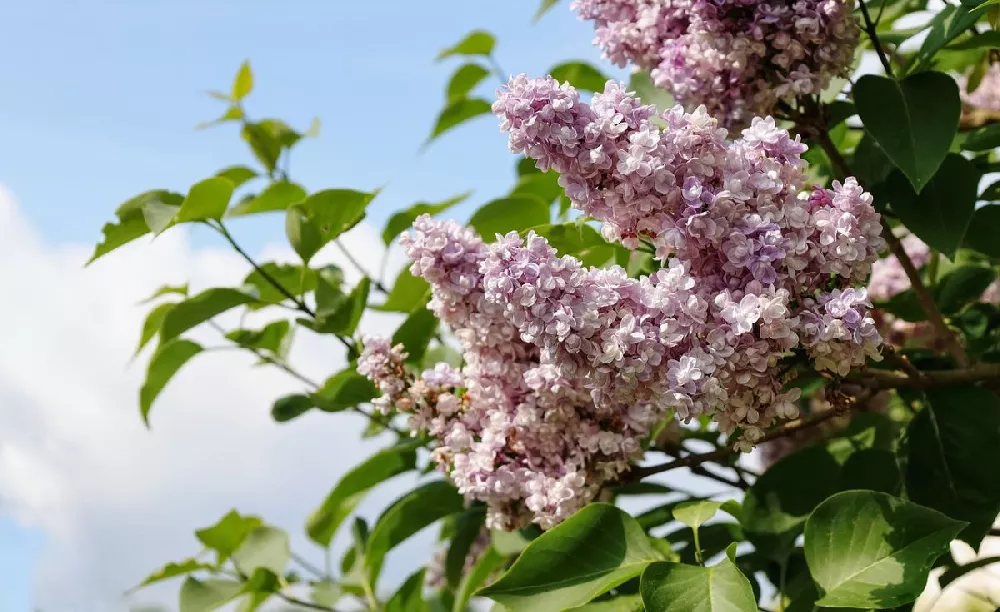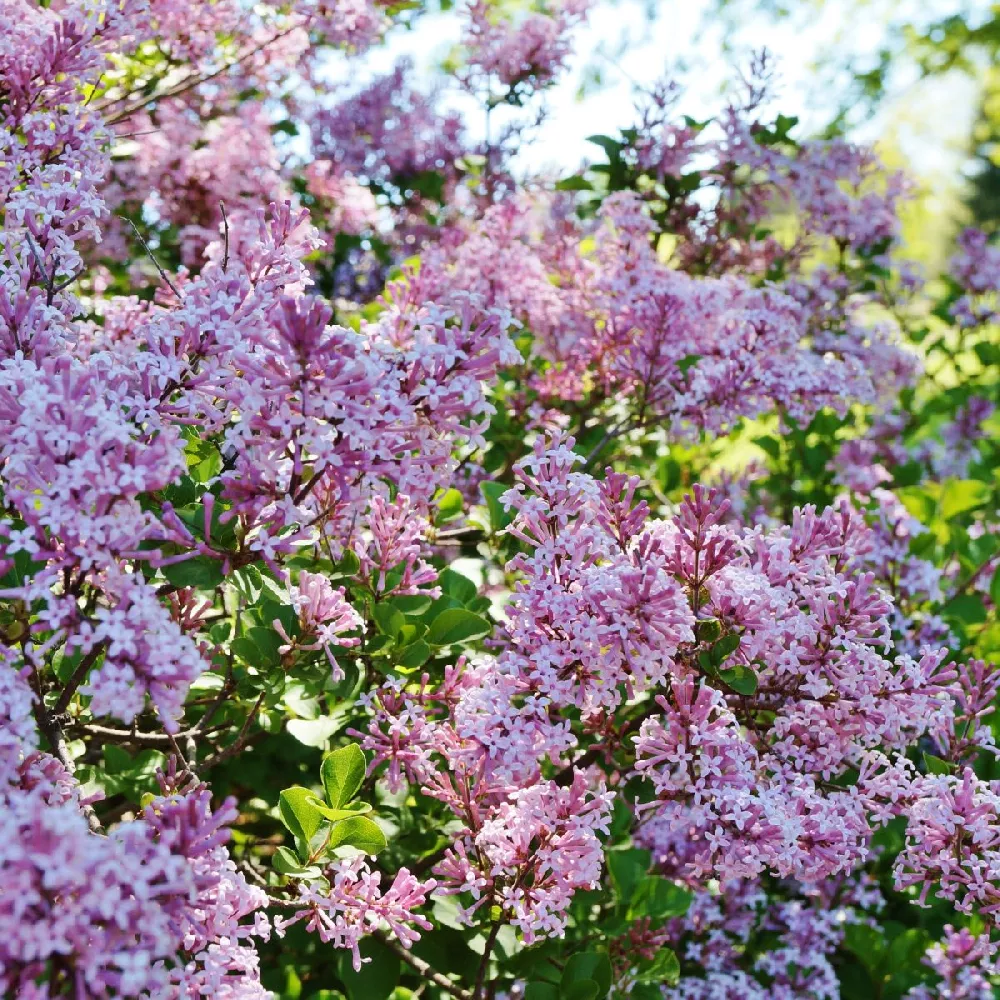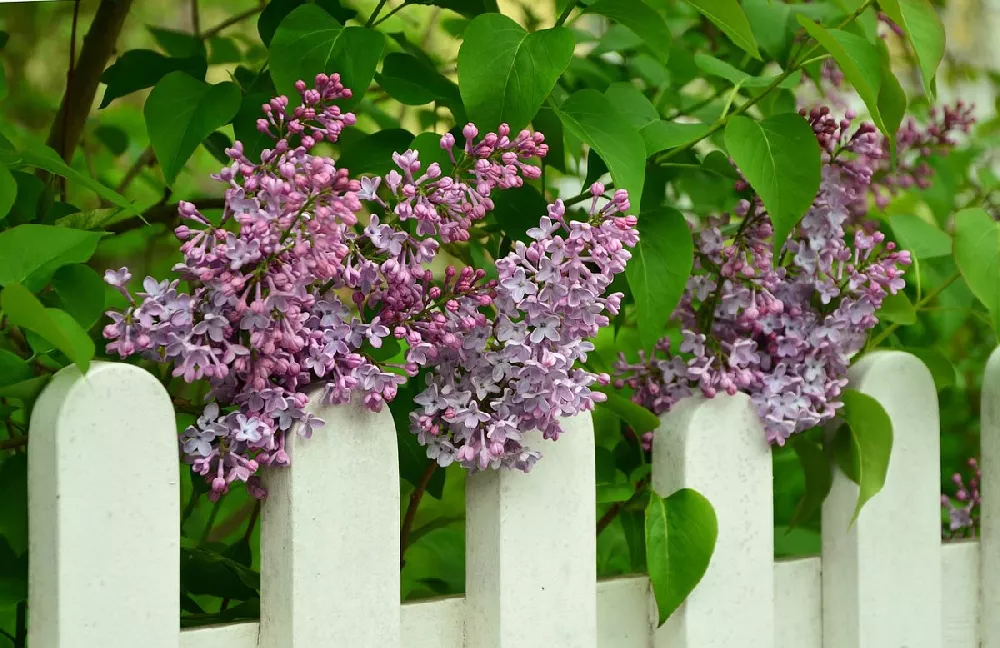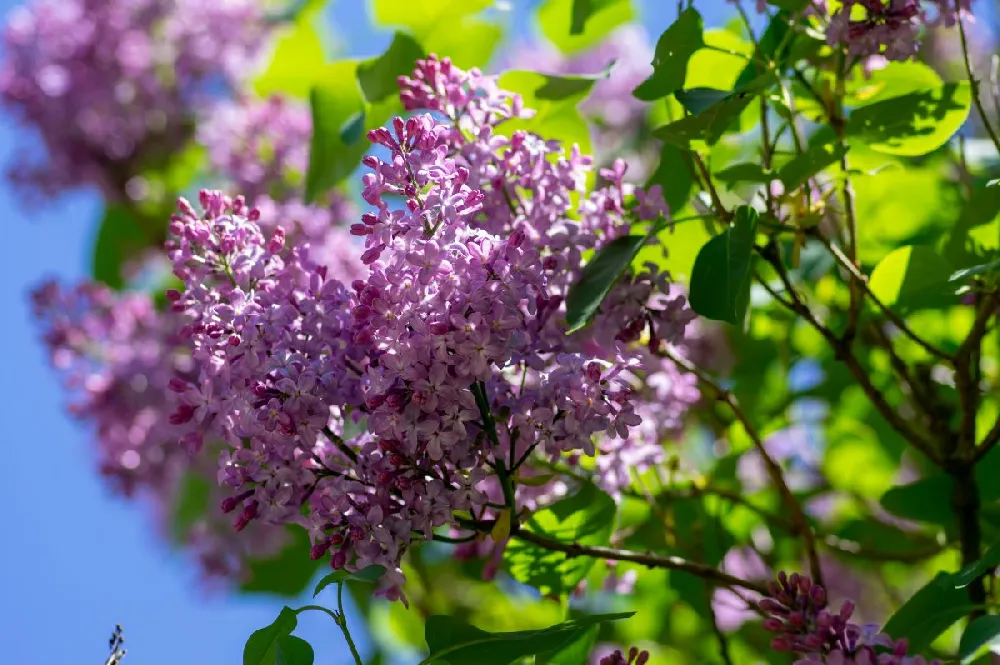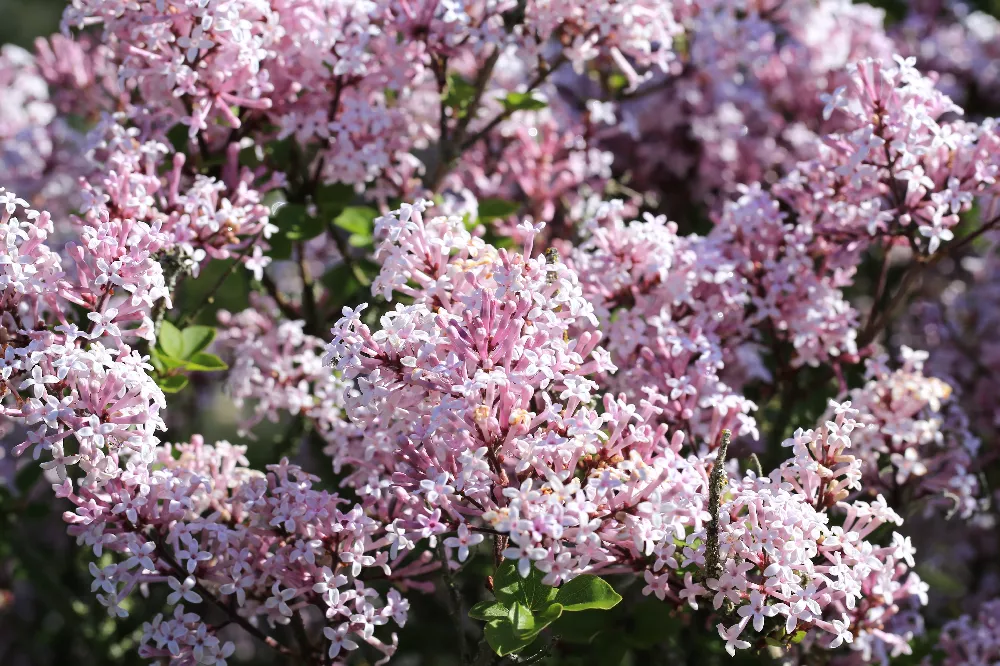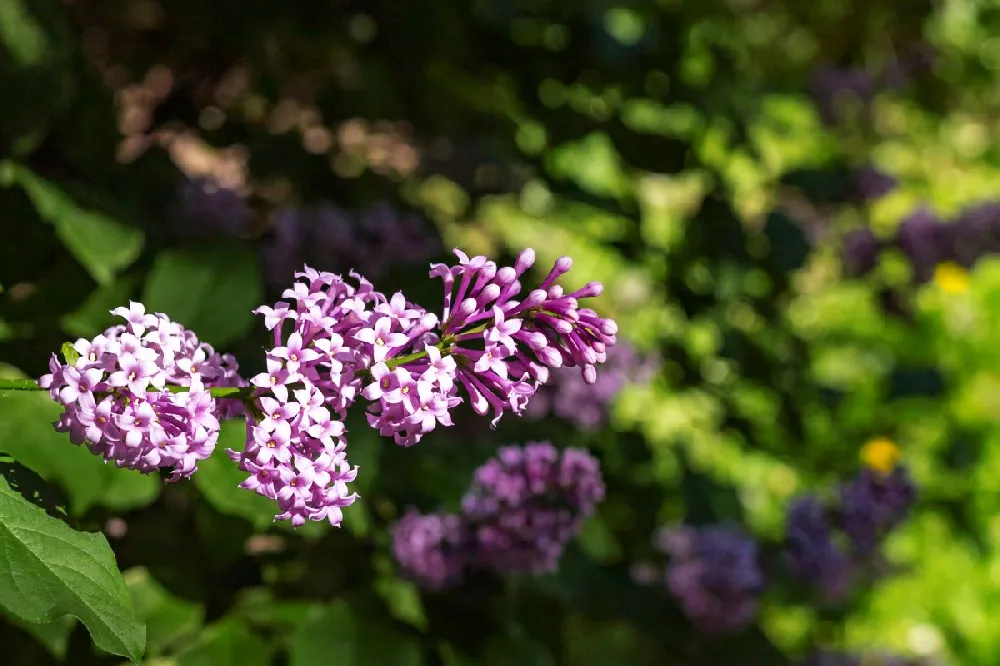Dwarf Korean Lilac Shrub for Sale - Buying & Growing Guide
- Ships in 1-2 days
- 1-Year Warranty Eligible
- Pots or accessories are not included unless specified in the product options.
Shipping Details:
Once your order is shipped, you’ll receive an email with a tracking number and estimated delivery date. Most orders ship immediately, but some items are seasonal and may only ship in spring or fall. These products are noted on the website.
The dwarf Korean lilac shrub is not only one of the best lilac varieties but also one of the most beautiful ornamental shrubs you can grow. Both the buds and the blooms of this cultivar, Syringa meyeri 'Palibin,' show shades that range from white to lilac and give off that pleasant and familiar lilac scent. Along with being an incredibly attractive shrub, the dwarf Korean lilac shrub is also quite convenient. It has great disease resistance, and while it's not as small as some other dwarf plants, it does not grow to be more than 5 feet tall.
- It has fragrant flowers with white, pink, and purple.
- The dwarf Korean lilac offers great disease resistance compared to other lilacs.
- It maintains a medium size at maturity.
Plant Care
Sunlight

The dwarf Korean lilac grows in both full sun and partial shade settings.
Watering
This plant performs best with water about once per week throughout the growing season.
Fertilizing

Use a balanced fertilizer once per year in the early spring.
Planting and Care
Planting instructions
A dwarf Korean lilac shrub can survive in both partial shade and full sunlight, but the latter is more beneficial to growth. This shrub also appreciates well-draining soils to the point where it can grow well in sandy areas and can adapt to most soils that fall within a pH range of 5 to just over 7. It can be beneficial to plant your dwarf Korean lilac shrub next to or near an evergreen hedge. Not only will the evergreen foliage provide a pleasant backdrop for the dwarf Korean lilac shrub’s flowers, but it may provide wind protection as well.
Watering and nutrients
As is true of any newly planted shrub, the dwarf Korean lilac shrub will need higher amounts of water while it is first establishing itself. During that establishment period, you should water this plant often enough to keep the soil consistently moist. After establishment, it’s best if you provide water about once per week during spring, summer, and fall. Fertilizing a dwarf Korean lilac shrub is also a straightforward process. All you need to do is apply a general-purpose fertilizer once in early spring, before growth begins.
Pollination
The dwarf Korean lilac shrub is more versatile than many plants regarding pollination. This plant can make use of both wind currents and pollinators to spread its pollen. The flowers of the dwarf Korean lilac shrub are also bisexual, which allows for easy self-pollination. However, pollination does not amount to much, as lilac fruits are neither ornamentally valuable nor commonly grown for harvest. Still, the pollination process will attract plenty of insects, including butterflies and bees, that will enliven your garden in spring.
Pruning
Typical of most lilac shrubs, the dwarf Korean lilac shrub holds its buds on a previous season’s growth. As such, pruning this plant too early in the spring risks removing many of the coming blooms. It’s best to prune after the blooms begin to fade in mid to late spring. During that time, you should remove any branches that look dead, damaged, or diseased. You may also remove the flowers, which allows the plant to focus more energy on spreading its roots and branches and may encourage better flowering in seasons to come.
Pests, diseases, and animals
Powdery mildew is a common affliction for many lilac shrubs. While this kind of infection does not always kill a lilac, it can detract from the overall appeal of these plants by causing unsightly mildew patches on the leaves. Fortunately, the dwarf Korean lilac shrub stands out as a cultivar that is exceptionally well-suited to ward off powdery mildew. Likewise, the dwarf Korean lilac shrub tends to have good pest and disease resistance overall, which adds to its ease of care.
Achieving maximum results
It’s true that the dwarf Korean lilac shrub is a low-maintenance plant overall. However, one threat to this plant is frost damage. Even though this plant can live as far north as hardiness zone 3, it remains vulnerable in late winter and early spring. A late winter storm with cold temperatures and strong winds can damage this plant’s buds, which tend to arrive quite early in the season. As such, it’s best to plant this shrub where a fence, hedge, or other structure can provide wind protection.
FAQs
Is the dwarf Korean lilac shrub the same as the Miss Kim lilac?
What is the parent species of the dwarf Korean lilac shrub?
The dwarf Korean lilac shrub is a cultivated variety of the Syringa meyeri plant, known commonly as Meyer lilac. Meyer lilacs are relatively small but tend to outgrow the dwarf Korean lilac shrub by about 3 feet in both height and spread. The Meyer lilac shrub likely came from China originally, and its favorable traits have given rise to several popular cultivars other than the dwarf Korean lilac.
How long does it take the dwarf Korean lilac shrub to bloom?
A brand new dwarf Korean lilac plant will likely take about two to three years to reach a mature enough age where it can produce flowers. By contrast, many standard lilac varieties take a longer time to produce their first blooms — often about five years, but sometimes more. Once your dwarf Korean lilac shrub begins blooming, you can expect it to provide copious amounts of flowers each year, with the right care.
Compare Similar Products
You can't add more Product Name - Product size to the cart.
OK